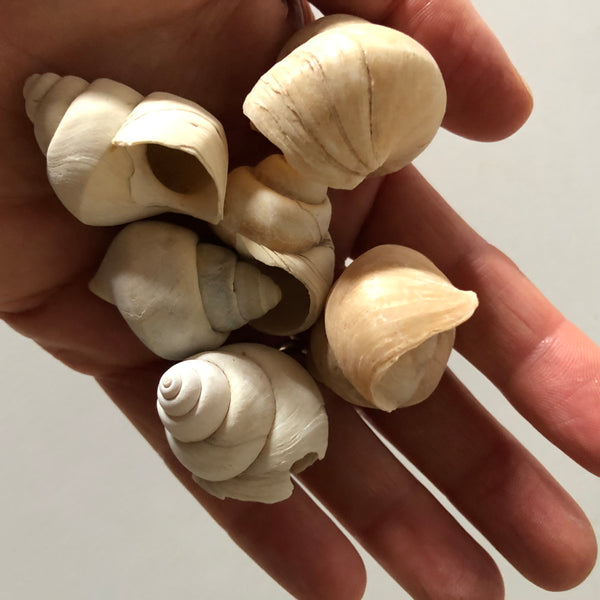- Continue Shopping
- Your Cart is Empty
Neothauma tanganyicense Shells
Sold Out
The shell-dwelling cichlids of Lake Tanganyika are some of the most endearing, fascinating fishes in the aquarium hobby. As their name implies, many species of
Neolamprologus and Lamprologus dwell in the numerous abandoned shells of the snail, Neothauma tanganyicense which populate the substrate.
These are THE actual shells which these unique fishes inhabit. If you're a fan of shell-dwellers, you'll go crazy for these!
- Clean, carefully-collected shells
- Sturdy, long-lasting
- Perfect sized openings for shell-dwelling cichlids
These amazing shells are collected in shallow waters near Kasanga, in the Rukwa Region of Tanzania- exclusively for us, by a supplier who knows the lake and its fishes intimately. It's taken us over 5 years to secure a supply of them, and we know you'll love them as much as we do!
If you love "Shellies", these amazing shells are a "must have" for your Lake Tanganyikan biotope aquarium!
NOTE: Because the se are natural shells, there may be slight imperfections and chips on the shells you receive. We make every effort to select only the most intact specimens, and ship them carefully, but natural blemishes may be present.
PREPARATION NOTES: Although these are nicely cleaned shells, you should boil them gently for about 10 minutes to "crack off" any impurities (mud, etc.) that might be in their interior.
Always go slow when introducing any natural materials into your systems, so you can judge the effect they have on your fishes and plants. They are not intended for human consumption. DO NOT INGEST!
Related Items
Littorina sp. (Mangrove Periwinkle) Shells (.5oz/142g. package)
Sold Out - $ 3.00
Littorinia are small (approx. 1/4" /.63cm or less) mollusks which are found throughout the tropical mangrove estuaries. They are known commonly as "Periwinkles", and are prolific members of the mangrove...
Telescopium Snail Shells (Approximately 2.5"-3" /6.35-7.62cm)
Sold Out - $ 3.00
The mangrove thickets of estuaries and inshore areas are home to an extraordinary diversity of animals, particularly, gastropod mollusks. One of the more common species is Telescopium telescopium, also known...
Donacidae Shell Halves (Pack of 50 specimens)
Sold Out - $ 5.00
The family Donacidae contains 5 genera and over a dozen species. These bivalves are an important component of coastal food chains. While not typcally found in a Mangrove estuary habitat,...

















